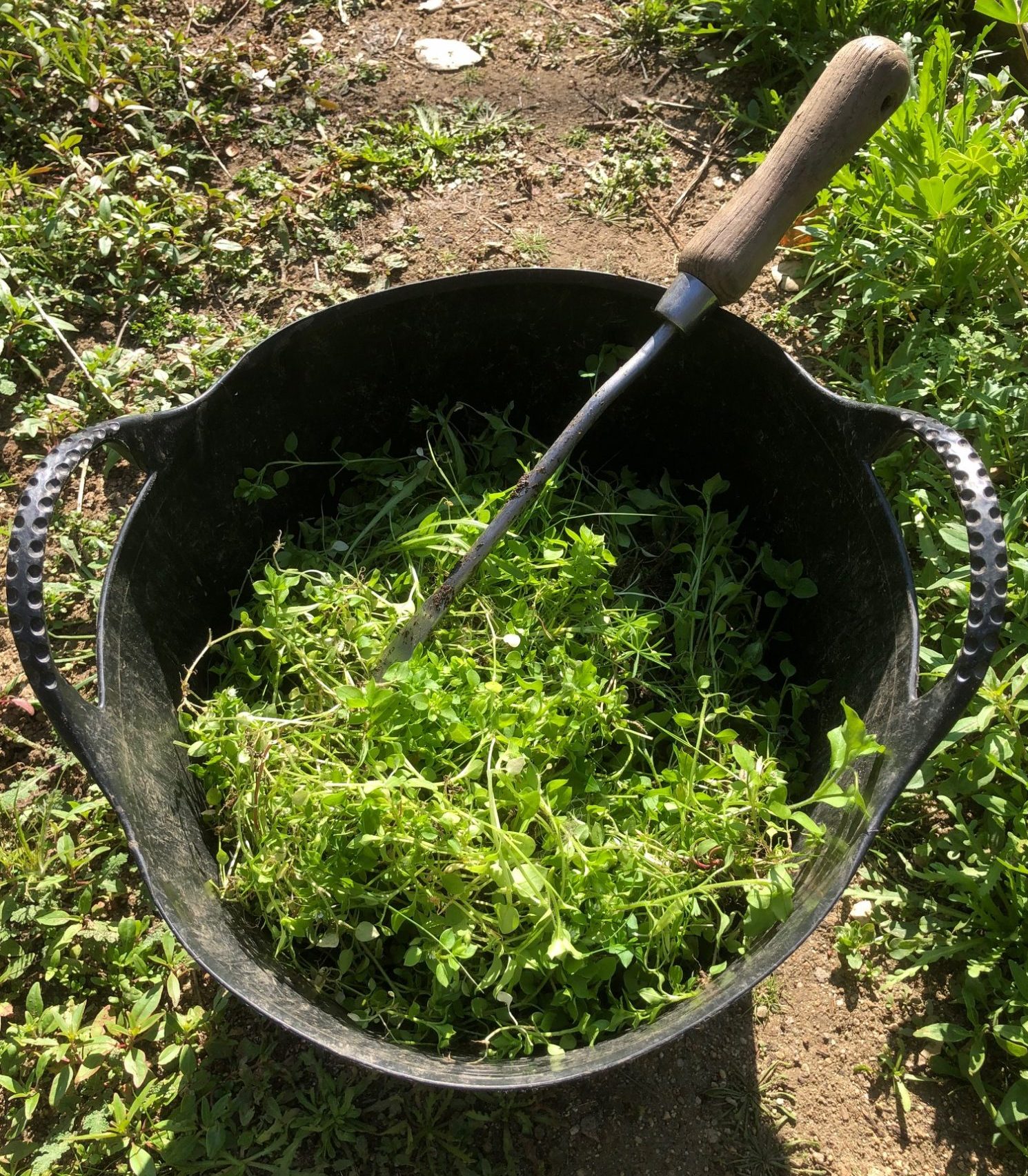Once upon a time, the LANPS garden was nothing but a dense jungle of waist-high weeds. Like any other neglected patch of urban land in Southern California, it was smothered by a blanket of noxious, exotic imports by the end of each rainy season: Nettleleaf Goosefoot; Cheeseweed; Sow Thistle; Bermuda Buttercup; various annual grasses; and the pernicious Common Chickweed. Back in those days, it was all I could do to rip out the rank, weedy mess by June’s fire clearance deadline, haul it up to the street for disposal in a zillion black plastic trash bags and then repeat the entire ordeal the following year.
It was only when I started weeding all year long that this laborious yet wholly unproductive cycle was finally broken. It took many years and literally hundreds of hours, but eventually, the annual bumper crop of weeds started to dwindle until, in some areas of the garden at least, it all but disappeared. Aside from the obvious benefit of being able to actually walk from one end of the yard to the other without a machete, I soon began to notice a completely unexpected, corollary effect of finally reining in the garden’s invasive, weedy disturbance: as if by magic, a surprising number of California native plant species began to “spontaneously” appear.
One wonders if the seeds of such species as Deerweed (Acmispon glaber) and Wild Heliotrope (Phacelia distans) that started popping up here and there were deposited in the newly liberated soil by birds or if, more intriguingly, they had been lying dormant in the seedbed for a very long time, patiently waiting for the conditions sufficient to their germination to be made manifest. After a year or two, the shoots of Blue Elderberry (Sambucus nigra ssp. caerulea,); Toyon (Heteromeles arbutifolia); and Southern Black Walnut (Juglans californica) started to push up through the soil unbidden, as did Fiesta Flower (Pholistoma auritum); Island Morning Glory (Calystegia macrostegia); Douglas’s Nightshade (Solanum douglasii); and three members of the genus Pseudognaphalium: californicum, microcephalum and bioletti. Sprouting acorns from the garden’s many Coast Live Oaks (Quercus agrifolia), the sighting of which had formerly been quite rare, also began to proliferate. It was as if a terrible curse that had kept the land from expressing its true nature for over a century, had finally been lifted.
I’d like to tell you that the weeds never came back and that the plants in the garden all lived happily ever after, but as any gardener will tell you, the price of a weed-free garden in this weedy world is eternal vigilance. Our neighbors’ yards on all sides are filled with nasty weeds every year, providing a constant source of new contagion. In fact, we still struggle to contain the annual invasion of Chickweed, which proliferates in spite of all our painstaking heroics and, if left unchecked, can quickly and completely suffocate a meticulously curated field of wildflowers in one or two seasons. Sadly, weeds, and therefore weeding, are forever.
For most of us, our very presence here in what we now call “California” follows from a European invasion that began centuries ago and that permanently contaminated its pristine ecosystems by importing domestic farm animals and the stowaway, foreign weeds that accompanied them. Contemporaneous documents from the 19th Century suggest that the incredibly biodiverse prairies of the Los Angeles basin vanished with astonishing speed as the non-indigenous human population grew. One could say that we are the inheritors of that invasion as well as the agents of its continuing patterns of environmental exploitation and displacement.
And yet, while humans may be the planet’s “preeminent weedy species,” as stalwart California native gardeners, we at least have the power to liberate our small plots of land from the curse of the anthropogenic weeds previous generations brought with them, at least for the short time we have on this earth. Whether or not your garden experiences the same kind of spontaneous repatriation of native species as occurred in mine, controlling your weeds will surely yield more benefits than will be plainly evident. All it requires is time, perseverance, patience and, above all, a belief in the constructive potential of human agency.
Heal your own patch of dirt and watch it flourish. If you weed it, they will come.
– Eric Ameria
© 2021 by LA Native Plant Source



